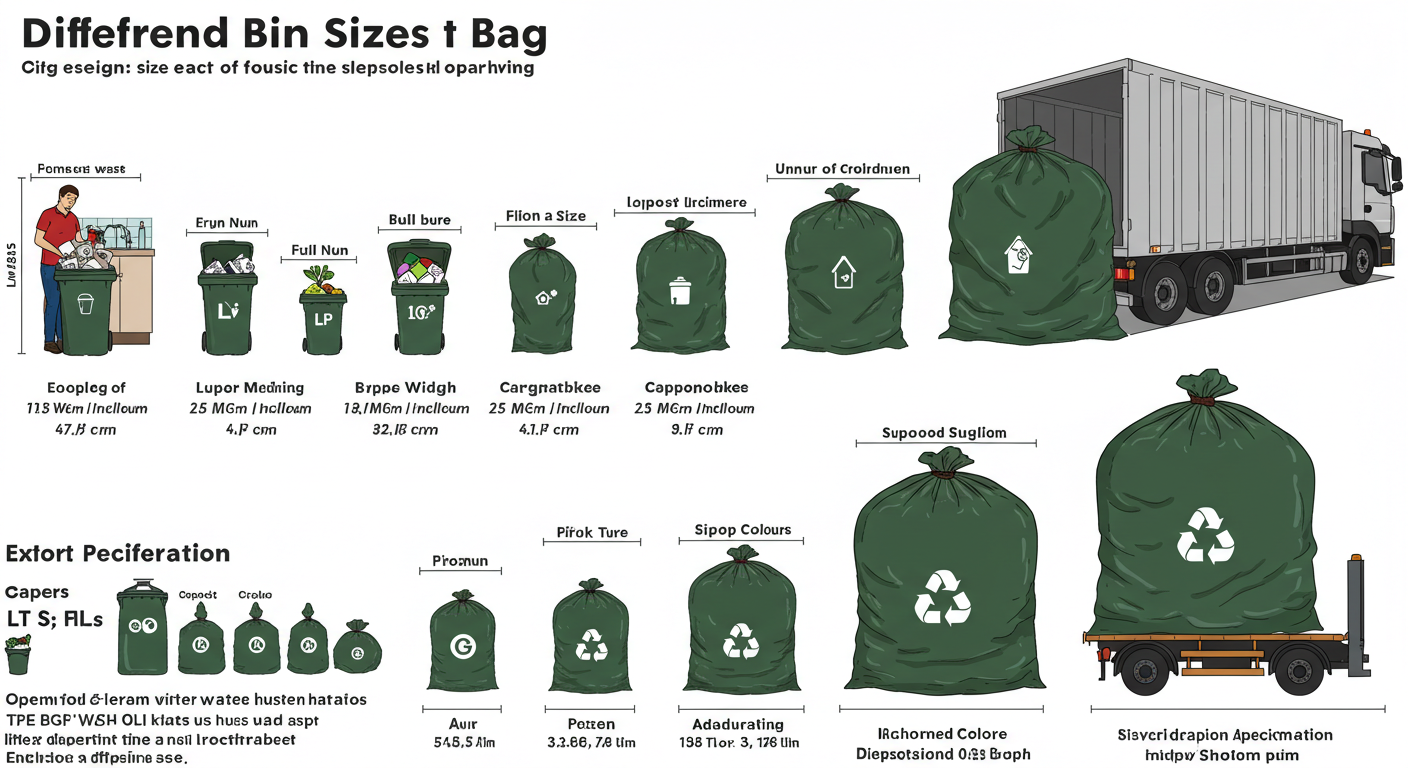When it comes to managing waste effectively, bin bag sizes play a crucial role. Picking the wrong size can lead to torn bags, overflowing bins, and unnecessary mess. On the other hand, choosing the right fit makes waste disposal easier, cleaner, and more efficient. Whether you’re shopping for your household, office, or commercial space, understanding bin bag sizes can save both time and money.
Why Bin Bag Sizes Matter
Different environments generate different amounts of waste. A small kitchen bin won’t need the same size bag as an industrial waste container. Using a bag that is too small often results in spills, while a bag that is too large may be wasteful and more expensive.
By learning the basics of bin bag sizes, you can make smarter purchases and ensure your bins are always well-suited to their liners.
Common Bin Bag Sizes Explained
Bin bags come in a wide variety of dimensions. Here are the most common bin bag sizes and their typical uses:
1. Small Bin Bags (10–20 Litres)
Perfect for small bathroom or bedroom bins. These compact bags are lightweight and ideal for paper waste or light trash.
2. Medium Bin Bags (30–50 Litres)
The most popular option for kitchens, these bags strike a balance between capacity and convenience. They’re strong enough for daily household waste.
3. Large Bin Bags (60–100 Litres)
Often used in offices or workplaces, these bags can handle larger amounts of rubbish without tearing easily.
4. Extra-Large Bin Bags (120 Litres and above)
Designed for industrial or outdoor use, these heavy-duty bags are suitable for bulky or sharp waste.
Choosing the Right Bin Bag Sizes for Your Needs
When selecting a bag, consider the following factors:
-
Bin capacity: Always match the bag’s litre size to your bin’s size.
-
Waste type: Food waste requires thicker, leak-proof bags, while paper waste can use lighter bags.
-
Durability: For sharp or heavy waste, look for reinforced or heavy-duty bags.
-
Usage frequency: A frequently used bin may need stronger and larger bags.
Measuring Bin Bag Sizes Correctly
If you’re unsure which size to buy, here’s a simple way to measure your bin:
-
Measure the bin’s height. Add a few extra inches so the bag can fold over the rim.
-
Check the diameter or width. Use a tape measure across the top of the bin.
-
Use the bin’s capacity. Most bins display their size in litres, which helps narrow down bag options.
By measuring correctly, you avoid the frustration of bags that don’t fit.
Different Types of Bin Bags by Size
Aside from bin bag sizes, the material also matters. Some of the common options include:
-
Standard plastic bags: Affordable and available in all sizes.
-
Biodegradable bags: Eco-friendly alternatives suitable for kitchens and gardens.
-
Heavy-duty bags: Ideal for construction sites or heavy waste.
-
Drawstring bags: Easier to seal and carry, available in multiple sizes.
How Businesses Benefit from Choosing the Right Bin Bag Sizes
For offices, restaurants, and retail outlets, waste management is a daily task. Selecting the right bin bag sizes prevents waste overflow, reduces cleaning time, and cuts down on costs. Large businesses often purchase bags in bulk, so getting the size right avoids wasted stock.
Tips for Buying Bin Bags Online
With so many online suppliers, here are a few tips:
-
Always check product dimensions in litres or centimetres.
-
Read customer reviews to confirm durability.
-
Compare price per unit to get the best value.
-
Choose eco-friendly options whenever possible.
Conclusion
Understanding bin bag sizes ensures you always have the right fit for your bin, whether at home, in the office, or for commercial use. From small bathroom bins to industrial containers, choosing the right size reduces mess, improves efficiency, and saves money. Next time you shop, measure carefully and consider your waste type before buying.
